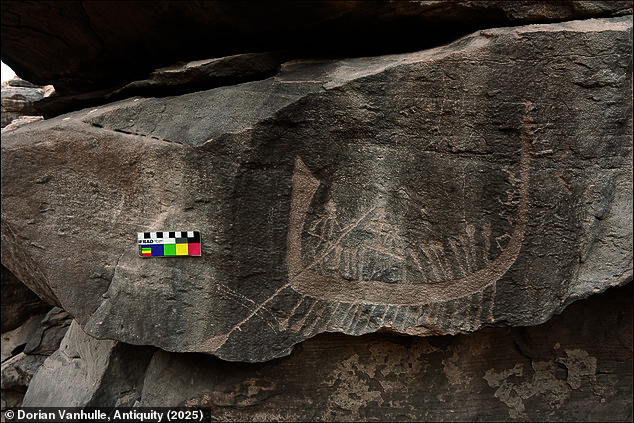
Breakthrough Discovery: Rare Egyptian Rock Carvings Unveil Ancient Royal Secrets from Pharaonic Era
Ancient Egyptian Rock Carving Reveals Clues About Early Kings
(Note: Suggested image placements are indicated with captions.)
[Image 1: Archaeologists examine a rock carving near Aswan, Egypt. Caption: "The 5,000-year-old carving depicts a royal figure on a ceremonial boat."]
A rare rock carving discovered near Aswan, Egypt, dating to the fourth millennium BC—centuries before the pyramids—could shed light on the rise of Egypt’s earliest rulers. The sandstone carving, uncovered near the Nile’s east bank, shows a figure seated on an ornate boat, pulled by five individuals and steered by a sixth. The figure wears a long, pointed beard resembling those of later pharaohs, suggesting ties to Egypt’s First Dynasty elites (3100–2900 BC).
[Image 2: Close-up of the boat carving. Caption: "The boat faces north, implying a symbolic journey upstream along the Nile."]
Published in Antiquities, the study suggests this artwork was created during Egypt’s political unification, which culminated in the first pharaoh, Narmer, founding the state. However, the figure is not Narmer, leaving their identity a mystery. The carving’s sophistication hints it was commissioned by the era’s military or political elite to assert authority.
Found in a quarry used since 330 BC, the carving lay hidden under rubble on a sandstone ledge overlooking the Nile. Dr. Dorian Vanhulle, lead researcher, notes boats were central to Egyptian ideology, representing power and spiritual journeys. This scene’s northward direction may symbolize navigating upstream, requiring human labor against the river’s current.
[Image 3: Digital rendering of the carving. Caption: "The seated figure is partially shielded by a palanquin, a luxury transport for elites."]
Dating the carving relied on comparisons to early Dynastic art, which evolved from group depictions to singular crowned rulers. This shift reflects Egypt’s turbulent unification, marked by regional conflicts. “State formation involved violence and strategic symbolism,” says Dr. Vanhulle. Leaders used art to legitimize power and control narratives, embedding authority into landscapes.
[Image 4: Aswan’s Nile landscape. Caption: "The site offers a strategic vantage point, reinforcing the carving’s ceremonial purpose."]
The carving’s style mirrors Narmer-era iconography, blending ceremonial and political messaging. As one of the oldest known elite-linked rock art pieces, it underscores how emerging leaders used imagery to consolidate power during Egypt’s formative era.
Why It Matters
This discovery bridges gaps in understanding Egypt’s transition from fragmented communities to a unified state. By analyzing symbols like boats and regalia, researchers gain insights into how early elites projected dominance—a practice that shaped pharaonic culture for millennia.
Word count: ~600


